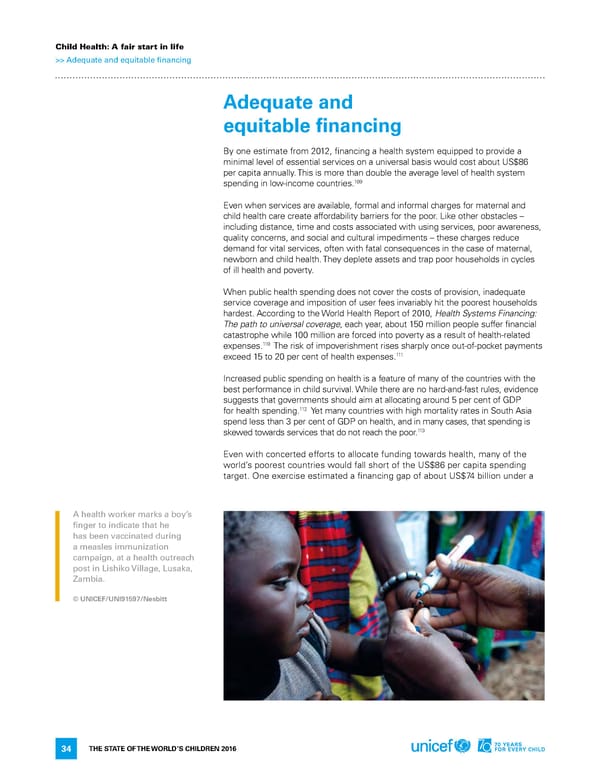Child Health: A fair start in life >> Adequate and equitable financing Adequate and equitable financing By one estimate from 2012, financing a health system equipped to provide a minimal level of essential services on a universal basis would cost about US$86 per capita annually. This is more than double the average level of health system 109 spending in low-income countries. even when services are available, formal and informal charges for maternal and child health care create affordability barriers for the poor. like other obstacles – including distance, time and costs associated with using services, poor awareness, quality concerns, and social and cultural impediments – these charges reduce demand for vital services, often with fatal consequences in the case of maternal, newborn and child health. They deplete assets and trap poor households in cycles of ill health and poverty. When public health spending does not cover the costs of provision, inadequate service coverage and imposition of user fees invariably hit the poorest households hardest. according to the World health report of 2010, Health Systems Financing: The path to universal coverage, each year, about 150 million people suffer financial catastrophe while 100 million are forced into poverty as a result of health-related expenses.110 The risk of impoverishment rises sharply once out-of-pocket payments 111 exceed 15 to 20 per cent of health expenses. increased public spending on health is a feature of many of the countries with the best performance in child survival. While there are no hard-and-fast rules, evidence suggests that governments should aim at allocating around 5 per cent of GdP for health spending.112 Yet many countries with high mortality rates in South asia spend less than 3 per cent of GdP on health, and in many cases, that spending is skewed towards services that do not reach the poor.113 even with concerted efforts to allocate funding towards health, many of the world’s poorest countries would fall short of the US$86 per capita spending target. one exercise estimated a financing gap of about US$74 billion under a A health worker marks a boy’s finger to indicate that he has been vaccinated during a measles immunization campaign, at a health outreach post in Lishiko Village, Lusaka, Zambia. © UNICEF/UNI91597/Nesbitt The STaTe of The World’S Children 2016 34
 70 Years for Every Child Page 48 Page 50
70 Years for Every Child Page 48 Page 50